Article
From Home to home ,
and heart to heart ,
from one place to another .
The warmth and joy of noroz ,
brings us closer to each other .
Happy New Year
از خانه به خانه ،
و قلب به قلب ،
از یک مکان به مکان دیگر .
گرمی و لذت
نوروز ، برای ما نزدیک به یکدیگر بودن را به ارمغان میاورد
سال نو مبارک

To your enemy , forgiveness .
To an opponent, tolerance .
To a friend , your heart .
To yourself , respect .
Happy New Year
پیشنهاد عیدی نوروز :
برای دشمن خود : بخشش
برای رقیب : تحمل
برای دوستانت : قلبت
برای خودت : احترام
سال نو مبارک

Faith makes all things possible ,
Hope makes all things work ,
Love makes all things beautiful,
i hope have all the three for this New Year
! Happy Norouz
ایمان باعث میشه همه چیز ممکن است ،
امید باعث میشه همه چیز کارکنه ،
عشق باعث میشه همه چیز زیباتر باشه ،
امیدوارم هر سه رو داشته باشی برای سال نو .
نوروز مبارک

Abuot Nowruz
Nowruz 1392 (2013) New Year
As the spring's footsteps start tickling the ears, lilies, daffodils and narcissus wake up to bloom, the impatient Iranians awaiting the spring, set up a colorful celebration to give it a red carpet welcome. Nowruz is the Persians' longest and most cherished festivity, on which all Iranians celebrate the New Year with the nature's resurrection from withered winter. It is deeply rooted in Zoroastrianism and counts as the oldest Iranian festival. Nowruz ancientness, variety, colorfulness, and rich symbolism mark it off from its peers in other nations and countries.
Nowruz is the Celebration of Life; it is determined according to the spring equinox and coincides with March 21, or the previous/following day, marking the start of the spring in the northern hemisphere.
Nowruz's characteristic herald, the old tambourine man, Hajji Firuz, with black-painted face and a red garb on, goes out in the cities and villages and while dancing and singing gay and cheerful notes, spreads high spirits and delight among the public. He is the messenger of health, power, happiness and abundance in New Year. His traditional musical instruments are trumpet and tambourine; while his traditional song is "Hajji Firuz-e, Saali Ye Ruz-e", which means "It is Hajji Firuz, coming only once a year".
Along with his troupe of musicians, he strolls on the streets, alleyways, and other passages entertaining people. Generous people impressed by the performance often present the artists with some tip and at the end of the performance the members are invited to a nice Nowruzian meal, and finally granted an Eidi (Nowruz gift).
Esfand, the last month of the year is the high time for a welcoming preparation. To begin with, the housekeepers set out to do the spring-cleaning, "Khaane-Tekaani" in Persian, which mainly entails the washing of the carpets and the other must-wash items and furniture. The other preparation is growing "Sabzeh" (wheat, lentil, or barley seeds) in some pot, which is done about 2 or 3 weeks before Nowruz but today many people simply buy them. One other preparation to welcome Nowruz is "Nowruzian shopping", called "Kharid-e Nowruzi".It includes purchasing new clothes, sweets, flower (in particular hyacinths and tulips) and the articles of "Haft Sin ".
Number 'seven' has got a holy position in the Persian mythology. We are told of seven levels of earth and heaven, seven deities superior to others, seven constellations which controlled the fate of the mortals and even seven days in a week. Seven-S spread, in Persian called "Sofreye Haft Sin", is the inextricable component of all homes on Nowruz. Sofreh means spread or tablecloth and Haft Sin, seven-S. Zoroastrians of Iran used to decorate their Haft Sin in seven big trays each bearing seven kinds of foods. The role of Haft Sin is very comparable to that of the Christmas tree in the Christian countries. Each item has its own symbolism, which stems from the advent of the custom.
Nowruz Norouz
Nowrouz
Haft Sin's most outstanding item is "Sabzeh" (the green sprouts of wheat, barley or lentil) which symbolizes rebirth and usually is beatified with a strip of red ribbon, while an orange may be placed atop. A glittering red or yellow "Seeb"(apple) is the second and stands for beauty and good health. "Samanu", kind of a sweet pudding or custard, is the next article symbolizing affluence. The following item stands for love and is called "Senjed", fruit of the oleaster or lotus tree. The forth one is "Seer" (garlic) and is the representative of medicine on the spread. Then there exists sumac berries, "Somaq", which epitomizes the color of the sunrise. And as the last article "Serkeh"(vinegar) epitomizes patience and age.
Different families or ethnicities may substitute some of the mentioned seven items with something else but those mostly accepted pieces were as enumerated. There also some articles whose initial is not "S", but count with the items of "Sofreye Haft-Sin". A book, preferably a religious one, an upright mirror, burning candles, colored eggs (as the Easter eggs), a bowl of water with an orange floating in, a bowl of water with a gold fish within, Iranian sweetmeats, confectioneries, different fruits, traditional Iranian pastries such as baghlava, "aajeel" (dried nuts, berries and raisins) which is another important component of the whole Nowruz festival, and the national colors of Iran.
Nowruz Nowruz Nowruz
Nowruz, Persian New Year
Nowruz has its own particular dishes, too. "Sabzi-Polo Mahi", rice with green herbs and fish, is served on the night just preceding Nowruz, or on the same Nowruz day. On the next day "Reshte Polo", rice cooked with noodles is prepared. "Koku Sabzi" is served for the dinner and is made out of herbs and vegetable soufflé. On the last "Shab-e-Jom'e" -the eve of Friday- prior to Nowruz, "Polo" and "chicken" are served for supper.
Nowruz begins with "Saal Tahvil", which can be translated as year delivery. It is the very first instant in the New Year; the exact moment of the spring equinox. Everybody in the family, dressed up in his or her new clothes, gathers around the Haft Sin spread looking forward to "Saal Tahvil". As the countdown ushers in the New Year, the members of the family, rejoicing, cheer up, hug and kiss each other, and exchange Nowruz greetings, "Eid-e Shoma mobarak!" or "Sal-e No Mobarak" (Happy New Year). Now everyone, especially the children and the youth, moves on to make the rounds of the elders of the family first, then the rest of their family and finally their friends and the neighborhood. Adults, too, have a set schedule of visits and receiving visitors.
This custom that first the young call on the elder demonstrates the respect that Iranians pay to the aged people. Visits are short, so that a typical visit takes one about 30 minutes. "Eidi", new-year gift, is another characteristic feature of Nowruz. Within the family, it is the duty of the head of the household to grant the Eidi to the members of the family, the same can be true of the visitors as well. Of course, in the case of visitors only those who are considered younger, or lower in rank, would receive "Eidi". It is to be mentioned that the young visitors do not bring any gifs with them, and may only receive a gift. The rounds of visitations might last as long as twelve days, up to the day of "Sizdah Bedar".
Among all Persian ancient ceremonies, Nowruz with its different aspects in every region of the country has got no more real, fresher and deeper peer. Nowruz repeats and renews everything, generates and revives the nature and influences Iranian creative soul, emotion and thought.
Previous article:
Motale Konin Sampiosta (12 years ago)
Next article:
lTwT (Let The Weapon Talk) We Will Conqure ;) (12 years ago)
About the game:

USA as a world power? In E-Sim it is possible!
In E-Sim we have a huge, living world, which is a mirror copy of the Earth. Well, maybe not completely mirrored, because the balance of power in this virtual world looks a bit different than in real life. In E-Sim, USA does not have to be a world superpower, It can be efficiently managed as a much smaller country that has entrepreneurial citizens that support it's foundation. Everything depends on the players themselves and how they decide to shape the political map of the game.
Work for the good of your country and see it rise to an empire.
Activities in this game are divided into several modules. First is the economy as a citizen in a country of your choice you must work to earn money, which you will get to spend for example, on food or purchase of weapons which are critical for your progress as a fighter. You will work in either private companies which are owned by players or government companies which are owned by the state. After progressing in the game you will finally get the opportunity to set up your own business and hire other players. If it prospers, we can even change it into a joint-stock company and enter the stock market and get even more money in this way.
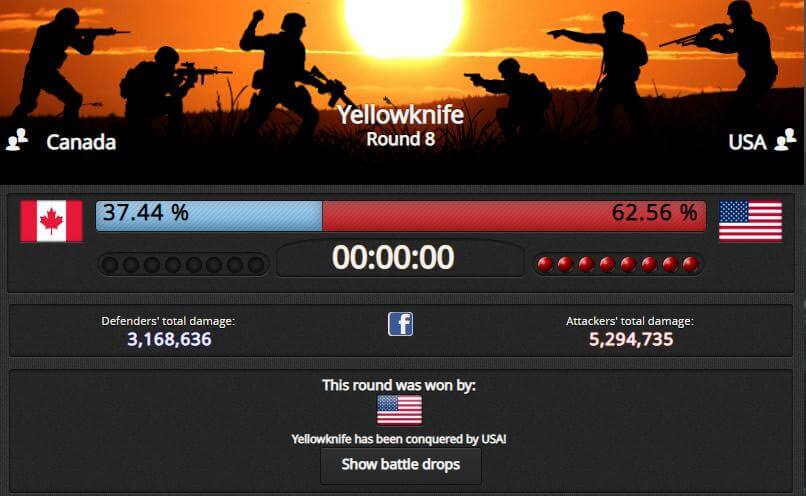
In E-Sim, international wars are nothing out of the ordinary.
Become an influential politician.
The second module is a politics. Just like in real life politics in E-Sim are an extremely powerful tool that can be used for your own purposes. From time to time there are elections in the game in which you will not only vote, but also have the ability to run for the head of the party you're in. You can also apply for congress, where once elected you will be given the right to vote on laws proposed by your fellow congress members or your president and propose laws yourself. Voting on laws is important for your country as it can shape the lives of those around you. You can also try to become the head of a given party, and even take part in presidential elections and decide on the shape of the foreign policy of a given state (for example, who to declare war on). Career in politics is obviously not easy and in order to succeed in it, you have to have a good plan and compete for the votes of voters.
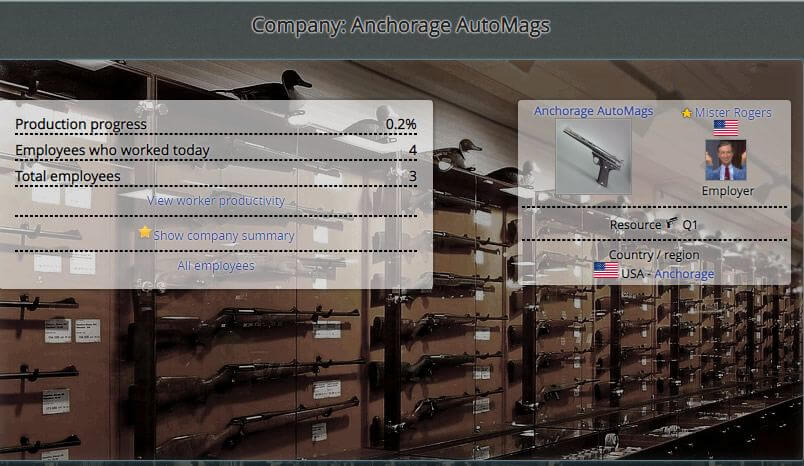
You can go bankrupt or become a rich man while playing the stock market.
The international war.
The last and probably the most important module is military. In E-Sim, countries are constantly fighting each other for control over territories which in return grant them access to more valuable raw materials. For this purpose, they form alliances, they fight international wars, but they also have to deal with, for example, uprisings in conquered countries or civil wars, which may explode on their territory. You can also take part in these clashes, although you are also given the opportunity to lead a life as a pacifist who focuses on other activities in the game (for example, running a successful newspaper or selling products).
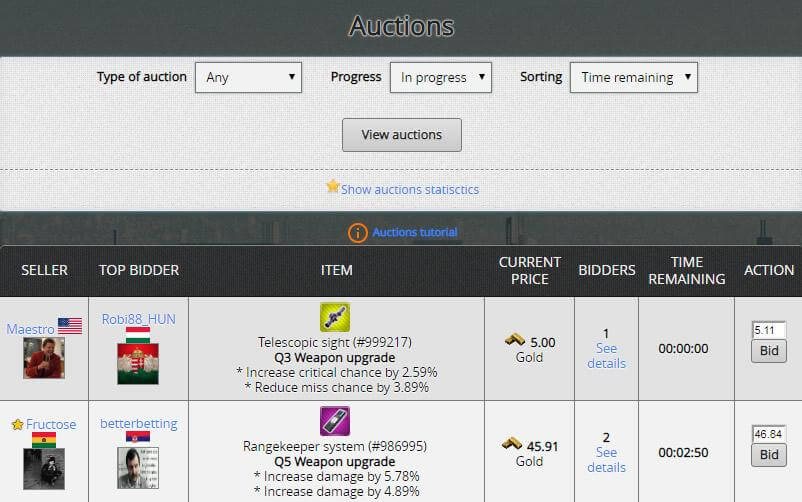
At the auction you can sell or buy your dream inventory.
E-Sim is a unique browser game. It's creators ensured realistic representation of the mechanisms present in the real world and gave all power to the players who shape the image of the virtual Earth according to their own. So come and join them and help your country achieve its full potential.
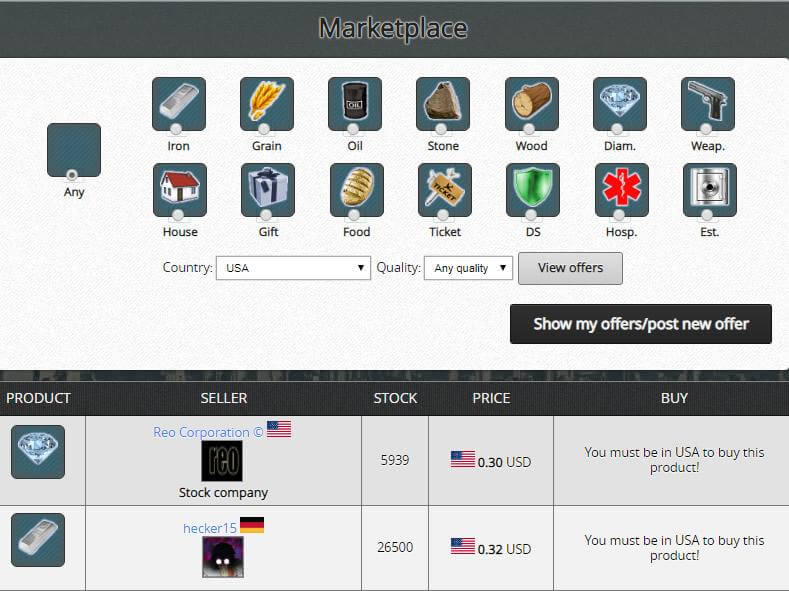
Invest, produce and sell - be an entrepreneur in E-Sim.
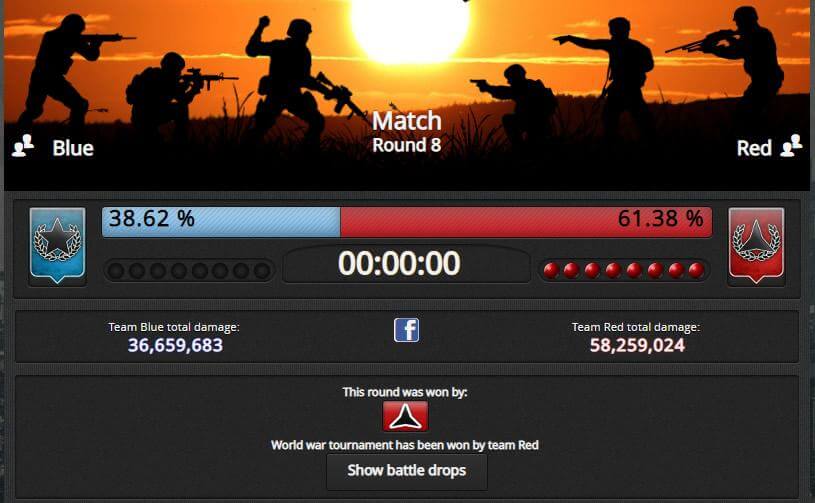
Take part in numerous events for the E-Sim community.

